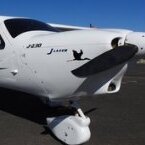I agree, I would have let you do your own thing and observed how you did . Maybe on a 2nd go at it, the instructor could demonstrate turning airspeed into altitude.
There's no better way to learn than doing it by yourself
My instructor Rob would probably have let me have a fist of it and observed what I did and then on the ground or at another time, discussed/workshop-ed it,
but, every instructor has their own methods, nothing particularly wrong either way.......
....I dont mind the steep turn at 500' onto final if I have heaps of airspeed, height and that I know I can bleed off that airspeed with a heap of drag out when the time comes. That's all experience....
Be mindful that (deadstick) steep turning onto final is going to be done with a high loss of altitude..... My (clean) Piper at max weight, 45 deg bank , I would be flying at 85 kts to pull that off... (15 kts above stall for that weight and bank) ......and I probably am going to loose 500' doing it....(15-20 seconds) I usually fly that manouver by looking at where I want to land with one eye (out the side window.....) , and another eye on airspeed and bank angle....- pitching the aircraft down sufficiently to keep the airspeed high. IE in those cases I am flying airspeed, and everything else on the panel is a distant secondary - except maybe bank angle........ No real need to look at the altimeter in those cases, you probably have no idea of the ground height and experience will permit you to judge 'enough height',,,,








